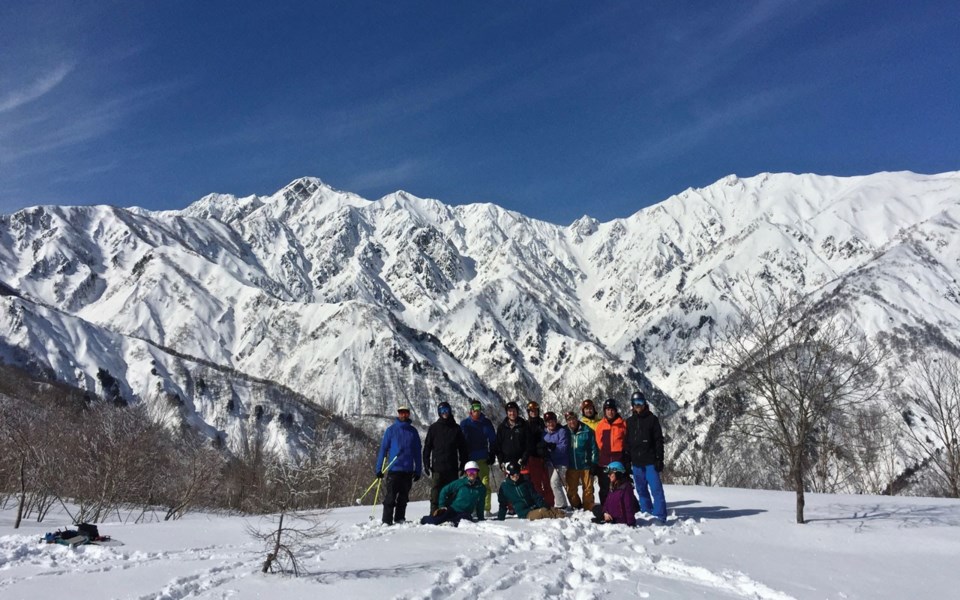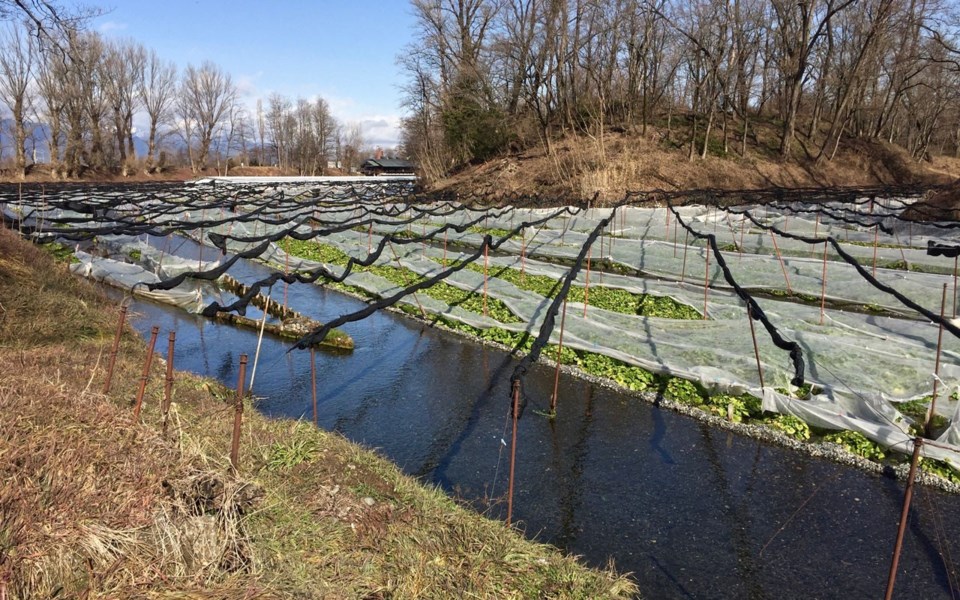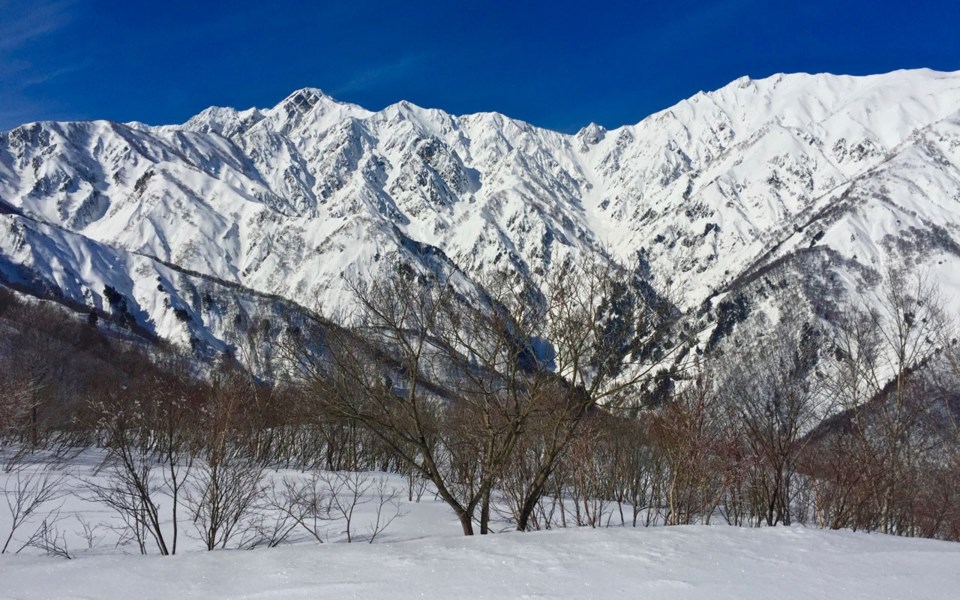
Ski-touring above Norikura Onsen, the trees thin and the ridge opens up, zigzagging to an alabaster pyramid several kilometres distant. Our guides know those upper slopes will be wind-hammered, sun-baked, avalanche-prone, or all three, and so we stop to peel off our skins. The good skiing will be here, they say, in the north-facing trees below. Blasting through them, it's very good indeed, and I silently thank our shepherds for the deliverance. The kodama—Japanese forest spirits—also deserve a nod.
With little wind to sweep snow from these hardwoods between storms, it grows in their axials like rising bread dough, casting shadows that shelter the deep meringue, which now provides joyous passage on this aspect and nowhere else. Another Hakuba confidence revealed and revered.
Boasting 10 ski resorts, 135 lifts, and a lot of funky everything, Hakuba has plenty of historical cachet in the ski world—including venue for the alpine and Nordic ski events during the 1998 Olympic Winter Games. Wandering its odd bricolage of hot-spring-heated streets, outdoor art, and architectural sensibilities, any given day here could be 1960, 1970, 1980, 1990, 2000. But if one thing elevates this small town in the Japan Alps above the greater pantheon of Japanese powder skiing, it's the labyrinthine terrain—the reason it's a veritable home-away-from-home for Whistler-based steep-ski maven Extremely Canadian (EC).
"We've been taking groups to Japan for 16 years now, but Hakuba for only three," notes EC principal Jill Dunnigan. "Japan is wildly popular with powder-savvy Americans and Canadians from the West Coast. This year we sold nine weeks there and only one in Europe. Clients like that it's still an authentic Japanese experience, a little rough around the edges—sort of like Whistler back in the early '90s."
If you're one of thousands around North America with a Vail Resorts Epic Pass, like many here in Whistler, a free five consecutive days of skiing Hakuba is an attractive bonus. Attractive enough for my partner and I to join EC and other Epic Passers from Vancouver, Seattle, and Bellingham in Hakuba this past February.
Hakuba weeks can be purely resort-based, or focus on chairlift-accessed ski-touring, where most of your ski time is spent powder-hounding steeps outside the resorts. Here, dozens of ridgelines spider to the western horizon to prop up Japan's highest peaks at over 3,000 metres; that's a ton of terrain, and hundreds of descents. Both ACMG- and CSIA-certified guides show you the best of both worlds—pushing into the alpine when weather allows, and taking on the unmatched tree skiing during storms and dry spells as we did. Après activities include soaking in one of the area's ubiquitous hot springs (onsen), crowding into some of the most ridiculously tiny pubs (izakaya) you've ever seen, and, of course, re-fuelling with traditional Japanese cuisine in a range of places dedicated to the likes of Wagyu beef barbecue, sushi, ramen, and okonomiyaki (a kind of cabbage-filled pancake-y thing with various toppings).

Of course, this being a ski group, sake parties around the table in our comfortable modern chalet were a nightly occurrence. During one, the house shook and furniture shifted as a small earthquake rolled through, causing everyone to wonder if they'd maybe had enough.
Hakuba's appeal, however, includes more than just skiing and culture. It's also a paean to nature, from the towering peaks and hot springs to the many national parks and creatures who live in and around the ski areas—snow monkeys, bears, eagles and phantom-like kamoshika—whose suspicious prints constellated the snow as we toured above Goryu ski area on our third day.
I'd seen my first kamoshika years earlier on a steep ridge at Nozawa Onsen, where I'd dropped over a pillow to almost brush the bizarre creature, known for hanging out where edible plants are exposed. The English name for this antelope relative—Japanese Serow—doesn't do it justice. At the time I was shocked by the sight of a furry, boar-sized animal with a bearded face, perky bear-cub ears, and small devil's horns, but now I hoped to see one again. We would ultimately spot several at Goryu, including a mother and fawn sunning on a knoll below the main gondola. That was also the day of an unusual warm-up where skiing went dark for a couple of days.
"There aren't many down days in Hakuba, but I really like all the things you can do when there is one," says Dunnigan.

Like a hike to see the snow monkeys in their own private onsen, a visit to the Zenkoji Temple housing the first Buddhist statue ever brought to Japan, or a tour of Matsumoto Castle, a magnificent six-storey wooden structure built in 1504 and centrepiece of Matsumoto City, where you can check out the region's famous wasabi farms, soba noodle houses and sake distilleries.
With bigger mountains and bigger weather than elsewhere in the country, Hakuba ultimately fuses Japanese and European ski-area sensibilities. Yet despite the ad hoc town and international-ish vibe there's still a true Japanese experience to be had—which very much includes skiing and communing with forest kodama.
For Part 1 see Pique, March 14, "Epic Hakuba: First things first." Next time it's Tokyo daze—three days in the world's largest urban area.
Leslie Anthony is a Whistler-based author, editor, biologist and bon vivant who has never met a mountain he didn't like.



